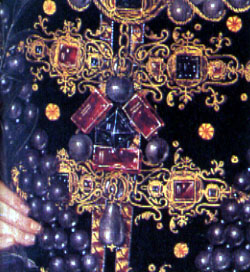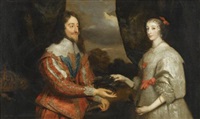A Sense of Place
Scottish author Marie Macpherson explains how her native county of East Lothian provided the foundations for a trilogy.

Hailes Castle
The mist-covered mountains of the Scottish Highlands may have cast a spell over many romantic novelists, but my heart lies in the Central Lowlands where most of Scotland’s political struggles and bloody conflicts took place. The early 16th century during the turbulent period of the Reformation and the reign of Mary, Queen of Scots, has inspired my trilogy based on the life of the Reformer, John Knox.
The rich history of my birthplace has fascinated me, not surprising perhaps, since I was brought up on a battlefield – the Battle of Pinkie fought in 1547 (we lost) – and within sight of Fa’side Castle from where Mary Stewart set off for her last confrontation as Queen of Scots at Carberry Hill (she lost). Digging in the back garden became an archaeological excavation to find buried treasure or the bones of slain soldiers. Other blood-soaked battlefields were within easy reach; Prestonpans (we won), Dunbar (we lost, twice), Athelstaneford, birthplace of the Scottish flag, the Saltire (we won). There’s hardly an inch of turf in the Lothians untrodden by a marauding army and hardly a castle or stately home that is not haunted by a ghost. This instilled in me a strong sense of the past and urged me to explore more deeply the stirring history of my native county. Writing fiction gives my imagination free rein as I attempt to conjure up what life was like for the inhabitants of those now ruined castles and deserted abbeys. Exploring the personal relationships and often hidden motivations of historical characters drive my curiosity.
My journey started off with a very small step, almost a footnote in history, The Treaty of Haddington signed in 1548 which betrothed Mary, Queen of Scots to the French Dauphin and this intrigued me. Several sources mention that this significant event took place at the abbey and for years this was assumed t to be St Mary’s Collegiate Church as there was no abbey in Haddington – except there was – or had been. Sadly, St Mary’s Cistercian Priory, a victim of the Reformation, had been erased from history and memory for centuries. Only a few stones and place names – Abbey Mill, the Abbey Bridge – recorded its existence. Yet, as I discovered, this long-lost priory had been one of the wealthiest religious houses in Britain, presided over by some very unorthodox prioresses, including Elisabeth Hepburn, the reluctant nun, who became my heroine.
Another nugget I unearthed concerned the playwright and makar, Sir David Lindsay, who wrote a scathing satire on the corrupt Roman Catholic clergy. He had been exiled to his estate at Garleton Castle, near Haddington, now a forgotten ruin set amidst farm buildings. Speculating that the fates of the poet and the prioress might be intertwined became the starting point of The First Blast of the Trumpet.

The historic town of Haddington was also the birthplace of another religious figure, the fiery Reformer, John Knox. Because he called himself Giffordiensis, it was assumed he was born in Gifford, a village that did not exist at the time: he was more likely to have been born in Gifford Gate, Haddington.
There was also confusion about his birthdate. 1505 is inscribed on the commemorative plaque beside the oak tree planted by the great Victorian historian, Thomas Carlyle, whereas Knox was probably born around 1513/14. After studying at St Andrews, he returned to Haddington to serve as a Roman Catholic priest and notary. He was ‘pulled from the puddle of papistry’ by the charismatic preacher, George Wishart, who was arrested in St Mary’s Church, despite Knox standing at the foot of the pulpit bearing a two-handed sword to defend him. While Wishart was taken to St Andrews and burnt at the stake, Knox was arrested as a heretic and sentenced to toil for 19 months in the French galleys. Which fate was worse? Knox’s survival from certain death convinced him that God had intervened to save him to become His divine messenger. The First Blast of the Trumpet ends after the signing of the Treaty of Haddington when Queen Mary sails off to France in a galley, possibly rowed by the slave John Knox.
Hailes Castle sets the scene for opening of The First Blast of the Trumpet.
 At midnight on a doom-laden Hallowe’en three young lasses sit round the hearth in the West Tower, gazing into the flames trying to divine their future. From this fortress perched high on a rocky outcrop on the banks of the River Tyne, accessible only by a narrow farm track, the powerful Hepburn family, the Earls of Bothwell, controlled the lands of East Lothian. Though now a ruin, this hidden gem retains many features still recognisable enough to fire the novelist’s imagination. In the Great Hall, the earls would host grand banquets prepared in the vaulted kitchen underneath where scullions would turn spits over huge fires; children would scamper up and down the turnpike staircases of the three towers, and prisoners would languish in the two pit prisons or oubliettes – one of which is said to have contained George Wishart after his arrest. What must it have been like to have been lowered down into a pit and left in complete darkness on a freezing winter’s night?
At midnight on a doom-laden Hallowe’en three young lasses sit round the hearth in the West Tower, gazing into the flames trying to divine their future. From this fortress perched high on a rocky outcrop on the banks of the River Tyne, accessible only by a narrow farm track, the powerful Hepburn family, the Earls of Bothwell, controlled the lands of East Lothian. Though now a ruin, this hidden gem retains many features still recognisable enough to fire the novelist’s imagination. In the Great Hall, the earls would host grand banquets prepared in the vaulted kitchen underneath where scullions would turn spits over huge fires; children would scamper up and down the turnpike staircases of the three towers, and prisoners would languish in the two pit prisons or oubliettes – one of which is said to have contained George Wishart after his arrest. What must it have been like to have been lowered down into a pit and left in complete darkness on a freezing winter’s night?
James Hepburn, 4th Earl of Bothwell, brought Mary, Queen of Scots to Hailes at least twice – if not three times. Firstly, when he abducted her after the murder of her husband Darnley, secondly on their way to Edinburgh to be married and possibly a third time before the stand-off at Carberry Hill where she surrendered to the Confederate lords and he fled into exile.
No self-respecting Scottish castle is without a ghost and Hailes is said to have at least two. The spirit of a man who starved to death in the pit prison because he had fallen in love with the laird’s wife, and a White Lady, said to be Mary, Queen of Scots, reputedly haunt the castle. Although local people claim to have sighted these spirits, I’ve still to experience any ghostly presence. However, wandering about the jagged ruins does send shivers up my spine. If only those stone walls could talk.
The Second Blast of the Trumpet follows the release of Knox into exile, firstly in England and then to Calvin’s Geneva, Frankfurt and Dieppe. Meanwhile, back in Scotland, Prioress Elisabeth Hepburn stands by the Regent, Queen Marie de Guise, in her struggle to hold the throne for her daughter against the oncoming tide of Reformation, led by the Protestant Lords of the Congregation. As they travel round the various royal residences, I try to give a flavour of what life was like in a Renaissance palace such as Falkland or Holyrood, or a fortified castle like Stirling or Edinburgh (none of which were a rocky grotto or bat cave as portrayed in the recent film!).
I’m working on the third part of the trilogy, The Last Blast of the Trumpet, which takes place mainly in Edinburgh where I lived for a time as a student and which has a special place in my heart. The medieval Old Town of Auld Reekie, a labyrinth of cobbled streets, narrow wynds and hidden courtyards, is amazingly well preserved and positively reeks of history, although the steaming midden heaps have long gone. John Knox House, where the reformer lived for a short time before his death, retains many medieval features. The dark oak panelling and painted ceilings make it particularly atmospheric, transporting me back in time to see Knox at his desk writing his fire-breathing sermons to be thundered from the pulpit in St Giles’ Kirk. Every stone and cobble from Edinburgh Castle down the spine of the Royal Mile to Holyrood Palace has witnessed conflict and chaos, corruption and cruelty through the centuries. I consider myself very fortunate to have all this history on my doorstep to inspire me as I strive to breathe life into Scotland’s rich past.
About Marie Macpherson
 Marie Macpherson hails from from the historic town of Musselburgh, six miles from the Scottish capital Edinburgh, but left the Honest Toun to study Russian at Strathclyde University. She spent a year in the former Soviet Union to research her PhD thesis on the 19th century Russian writer, Mikhail Lermontov, said to be descended from the poet and seer, Thomas the Rhymer.
Marie Macpherson hails from from the historic town of Musselburgh, six miles from the Scottish capital Edinburgh, but left the Honest Toun to study Russian at Strathclyde University. She spent a year in the former Soviet Union to research her PhD thesis on the 19th century Russian writer, Mikhail Lermontov, said to be descended from the poet and seer, Thomas the Rhymer.
After a career teaching languages and literature from Moscow to Madrid, she has found her niche in writing historical fiction which combines her academic’s love of research with a passion for storytelling.
The First Blast of the Trumpet and The Second Blast of the Trumpet are published by Penmore Press. She’s currently working on the third part of the trilogy, The Last Blast of the Trumpet.
Connect with Marie on:
Penmore Press Page: https://www.penmorepress.com/penmore_authors_/marie-macpherson.html
Goodreads: https://www.goodreads.com/author/show/5404227.Marie_Macpherson
WordPress: https://mariemacpherson.wordpress.com/about/
Twitter: @MGMacpherson
Facebook author page: Marie Macpherson
https://www.facebook.com/marie.macpherson.96
Watch the mini-documentary on YouTube:
John Knox and the Birth of the Scottish Reformation: http://youtu.be/40PV0rll6dw



 On Edward’s death, the magnificent Three Brethren passed into the hands of his elder sister Mary, then became a favourite jewel of Elizabeth I. It features in several of her portraits including the famous ‘ermine portrait’. Subsequent portraits of James 1st of England, VI of Scotland show him wearing the Three Brethren as well.
On Edward’s death, the magnificent Three Brethren passed into the hands of his elder sister Mary, then became a favourite jewel of Elizabeth I. It features in several of her portraits including the famous ‘ermine portrait’. Subsequent portraits of James 1st of England, VI of Scotland show him wearing the Three Brethren as well.